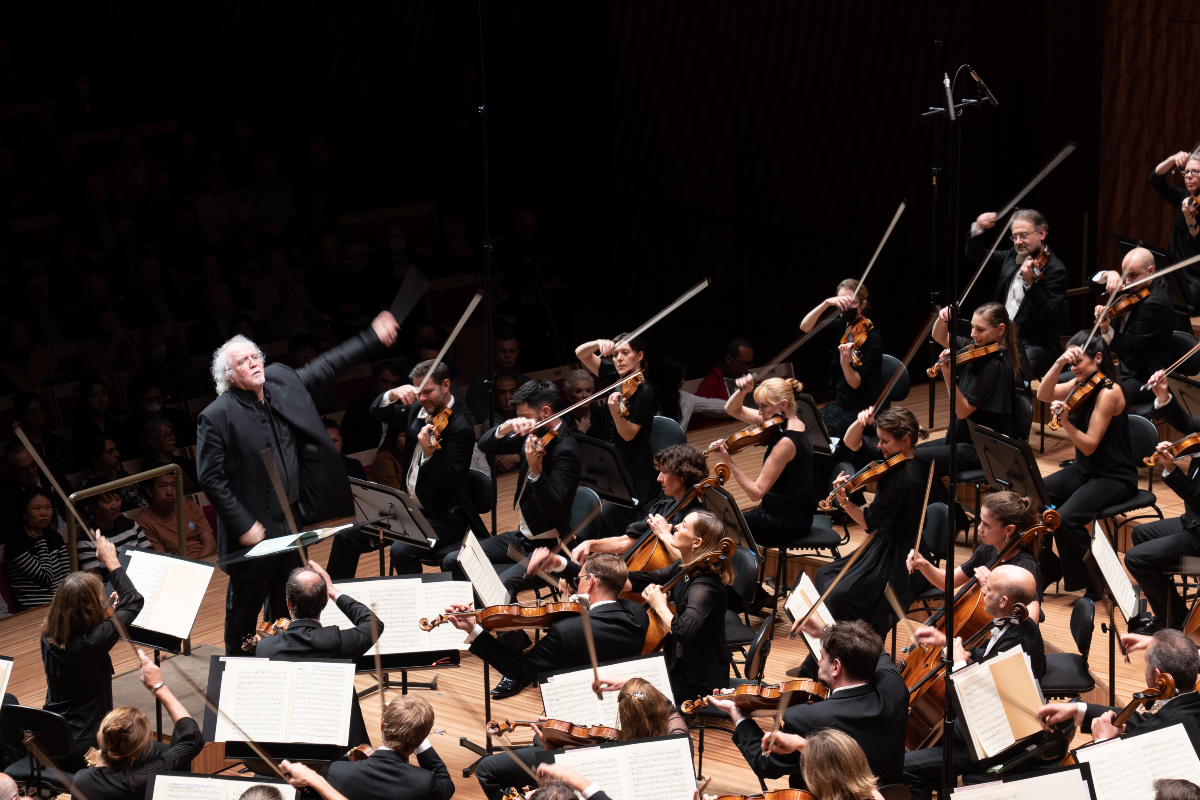Three deeply spiritual works made for an eclectic celebration of Easter by Sydney Symphony Orchestra under Principal Guest Conductor Sir Donald Runnicles.
Billed rightly as a special event, the first half featured John Tavener’s extraordinary The Protecting Veil, performed here for the first time by the SSO, with British cellist Matthew Barley, who believes the 45-minute piece is “one of the greatest cello concertos”.

Sir Donald Runnicles conducts the Sydney Symphony Orchestra. Photo © Jay Patel
Tavener, who died in 2013, wrote it in 1989 for the BBC Proms. He had converted to Orthodox Christianity 12 years earlier and wanted to created “an icon in sound”, with the non-stop cello representing the Virgin Mary. It was premiered by Steven Isserlis and his recording of it became a best seller in the non-classical charts, along with the likes of Henryk Goreki’s Third Symphony and works by Arvo Pärt.
Like them it is music that slows the pulse, allows the mind to contemplate and restores a sense of peace and consolation in a troubled world.
“The work is universal, timeless, structurally perfect and emotionally powerful …” Barley says. “It also brings out the foremost quality of the cello: its ability to sing.”
The theme which runs through the work like a leitmotif is part Gregorian chant, part Hindustani in character, its sliding grace notes sometimes landing intriguingly off-pitch. Tavener told Barley that at the time he wrote it he was listening to a lot of Indian classical music.
The orchestra both contrasts with and complements the soloist, often imitating church bells with sharp, densely harmonic bowing at full volume, at other times providing a gentle string chorale or bass drone.
Barley has become an advocate for the work over the years and his reading is quite different from the Isserlis recording, more spiritual but never lacking in passion when called for.
The emotional heart of the piece, Lament of the Mother at the Cross, is an almost unbearably anguished Stabat Mater after the harsh violin strokes imitate the nails being hammered into Christ’s hands and feet.
The following movement, Christ is Risen!, swells to a radiant climax before the sombre chant-like serenity of a movement describing the death of the Virgin.
The work then comes full circle to the solo opening phrase, which Tavener stipulated should be “transcendent with awesome majesty”.
Barley certainly summoned up that feeling with a performance of this work that relies less on flashy virtuosity but more on sustained beauty of tone and pure stamina.
The other two works, The Good Friday Spell from Act III of Richard Wagner’s Parsifal and Felix Mendelssohn’s Reformation Symphony No. 5, are linked by the ascending motif known as the Dresden Amen.
The SSO is fortunate in having two celebrated Wagnerians on hand in Runnicles and Chief Conductor Simone Young, and this 12 minutes of glorious orchestral music from the composer’s final opera – “his last card” – proved the perfect teaser for Young’s concert performance of the complete Die Walküre in November.
The woodwinds and brass were in scintillating form for this, with Shefali Pryor’s oboe rising above shimmering strings and burnished horns.
There was also some top brass in the opening movement of Mendelssohn’s celebration of the 300th anniversary of the Augsburg Confession and the establishment of the Protestant church. After the fanfare flourishes Concertmaster Andrew Haveron led the strings in the hushed quote from the Dresden Amen.
While the stage was being set up between numbers Runnicles chatted to Barley and told the audience that the Concert Hall acoustics were “the envy of the world”.
They certainly enhanced the listening experience for the unfolding of the symphony’s four movements, culminating in Mendelssohn’s adaptation of Martin Luther’s great hymn, A Mighty Fortress is our God and the final triumphant chorale.












Comments
Log in to join the conversation.